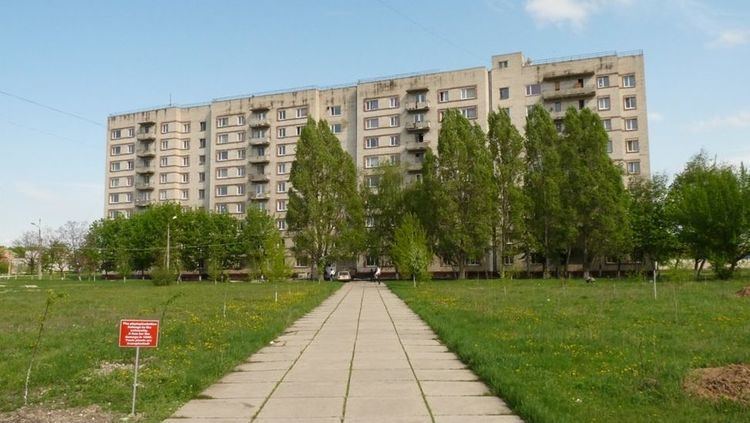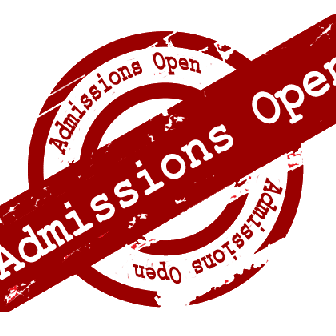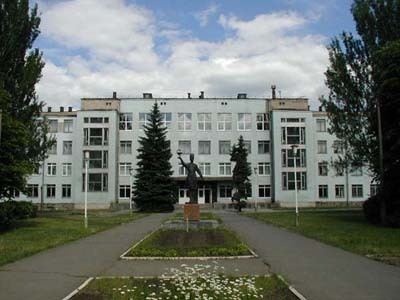Type Public Rector Igor Ioffe Campus urban Number of students 6,827 | Established 1956 Administrative staff 601 Headquarters Luhansk, Ukraine Founded 1956 | |
 | ||
Address Ukraine, 95006, Lugansk, square. 50th anniversary of Defense, Rubizhne, Ukraine Motto Medicina fructosior ars nulla (No art is useful than medicine) Similar Kharkiv National Medical, Donetsk National Medical, University of Luhansk, Crimea State Medical, East Ukrainian Volodymy | ||
Ukraine study guide lugansk state medical university
Lugansk State Medical University (Луганський державний медичний університет) was founded in 1956 in Luhansk, Ukraine. Initially known as Voroshilovgrad State Medical Institute (Ворошиловградский государственный медицинский институт), it received university status in 1994. In 1979 the then institute began offering postgraduate training, and from 1983 it began training foreign students in paediatrics, recruiting students from Middle Eastern countries (Iran, Iraq); Africa (Ghana, Nigeria, Egypt, Libya, Morocco); and Asia (India, Malaysia, Singapore). In 1998 the university also opened schools of pharmacy and dentistry. The university has three academic buildings with scientific laboratories, a pharmacy, a dental clinic, a library and a fitness centre, and it has operated a number of clinics in Luhansk's various medical institutions.
Contents
- Ukraine study guide lugansk state medical university
- Eid lugansk state medical university ukraine 2010
- History
- Campus infrastructure
- Faculties
- Internship Specialties
- Rectors
- Honorary Doctors and Graduates
- Journals and books
- References

There are 22 clinical and 18 theoretical professorships, and over 400 instructors, including 76 doctors of science; over 87 percent of its instructors hold higher scientific degrees. Most programs are taught in either English or Russian as the medium of instruction. The university's research focus is on the medical aspects of ecological problems in the heavily industrialized Donbass region and on the development and application of medical life support for casualties in man-made disasters. The university publishes several scientific journals and anthologies. By 2012, the university had more than 3,000 students from over 60 countries. Graduates are eligible for the United States ECFMG certification and are also eligible for certification in Canada and many other countries after passing a medical licensing examination in one of these countries.

Due to the War in Donbass, the university's faculty and students evacuated the area in September 2014, and classes resumed in Rubizhne, another city in Luhansk Oblast.

Eid lugansk state medical university ukraine 2010
History

Founded as Voroshilovgrad State Medical Institute on May 6, 1956, pursuant to Decree 2522 of Ukraine's Council of Ministers, the institute's first rector was Ivan Danilovich Vashchenko, acting chief physician of the Dzerzhynsk regional hospital.
He was succeeded by Prof. Evgenij Ignatovich Palchevskij, MD, who led the Institute from 1957 to 1960. Palchevskij was a Second World War veteran who was a graduate of Kiev Medical Institute, later renamed the Bogomolets National Medical University. Under his leadership, the academic staff and students of the institute were first organized as an Academic Council and a Student Society.
Associate Prof. Fedir Dmitrovich Povelitsya, PhD, who led the institute from 1960 to 1963, was a graduate of the Kharkiv National Medical University and had also fought in World War II. He was instrumental in developing the institute's clinical site.
Associate Prof. Donat Grigorovich Korchikov, PhD, institute director from 1963 to 1966, studied at Kharkiv National Medical University from 1941 to 1942, at Tashkent Medical Institute till 1943, then in the Kharkiv infantry mortar school as a Second World War combatant. In 1950 he graduated from the Dnipropetrovsk Medical Institute, now the Dnipropetrovsk State Medical Academy. Having completed the institute's clinical sites, he worked part-time as an assistant professor of surgery.
Campus infrastructure
The University campus is located in a forested area of Luhansk. The university's three academic buildings include laboratories for scientific research and a vivarium for maintaining laboratory animals, a facility for pharmacy instruction, a modern, fully equipped dental clinic and a centre for family medicine. The campus has a modern library, a sports complex with fitness centre, tennis courts and cricket pitch, and three multi-storey student residences with Internet access. It maintains a technical centre with lathes for metalworking, two pumping stations and five transformer substations. The university has also operated a number of clinics in Luhansk's various medical institutions. The total area of all campus buildings is 73,957m² — including classroom facilities, 18,172m²; training and support, 15,870m²; utility services, 25,135m²; and residences, 14,870m².
Faculties
Internship Specialties
The university offers interns the opportunity to specialize in any of 25 areas — obstetrics and gynaecology, anaesthesiology and intensive therapy, internal medicine, dermatology, children’s anaesthesiology, children’s otolaryngology, paediatric surgery, family medicine (general practice), general pharmacy, infectious diseases, clinical oncology, emergency medicine, neurology, neonatology, orthopaedics and traumatology, otolaryngology, ophthalmology, anatomical pathology, paediatrics, psychiatry, pulmonology and phthisiology, radiology, dentistry, urology and surgery.
Rectors
Honorary Doctors and Graduates
Some well-known LSMU graduates include Raisa Bogatyrova, an obstetrician-gynaecologist and a former Ukrainian Minister of Health; the late Vladimir Sergeevich Zemskov, an internationally famous oncologist and surgeon in Kiev; the late Valery K. Ivchenko, a trauma surgeon who was himself rector of LSMU from 2003 to 2014; and Tatiana Tkachuk, a specialist in gynaecological oncology who has authored numerous scientific papers.
